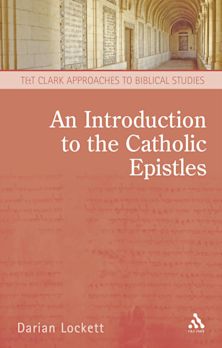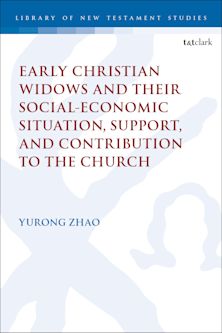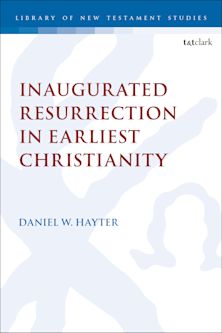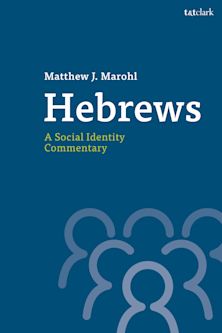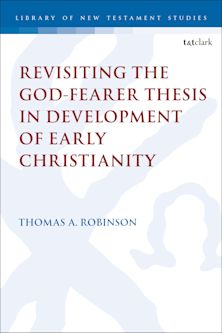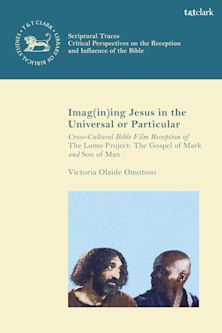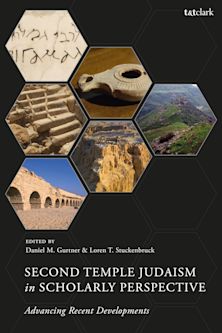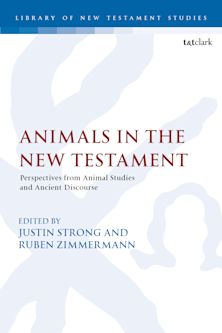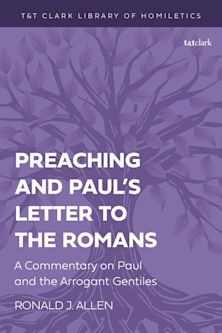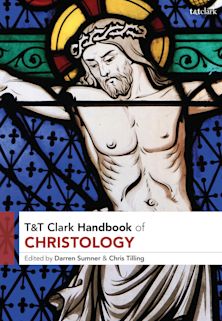- Home
- ACADEMIC
- Biblical Studies
- New Testament
- First Pure, Then Peaceable
You must sign in to add this item to your wishlist. Please sign in or create an account
Description
In this book Margaret Aymer takes up his challenge. It is an examination of the way in which Frederick Douglass, the nineteenth-century abolitionist, used the epistle of James, particularly Jas 3:17, in his abolitionist speeches, to "read" the "darkness" of slavery and slaveholding Christianity. Within the epistle of James is a rhetoric of the world as "darkness". Douglass uses this to read his contemporary "darkness." As part of her research, Aymer has created an index of biblical references in all of Frederick Douglass' abolitionist speeches as collected by J. W. Blassingame (1841-1860).
Table of Contents
1. Introduction: Silence, Darkness and an Invitation to Read
- Biblical Studies: An Ongoing Critique
- African Americans in the Guild of Biblical Studies
- Cultural Interpretation: A Review and Critique
- Reading "Darkness": A Theoretical Model of Marronage
- To Read "Darkness": Frederick Douglass as exemplum
- Frederick Douglass as "Darkness Reader"
- Oratory and Orientation
- Distillations and Large Sketches
2. Redefining "Religion": Douglass' Abolitionist Speeches and James 3:17
- The Language of Religion
- The Dimensions of "Home": Frederick Douglass and James 3:17
- "American Slavery, American Freedom and the Free Church of Scotland"
- Structural, textual, and ideational aspects
- Rhetoric and signification
- Other Uses of James 3:17 in Douglass' Abolitionist Speeches
- "What to the Slave is the Fourth of July?" and James 3:17
- "John Brown" and James 3:17
- The Language of Formation: Further Considerations
3. "Friendship with the Kosmos is Enmity with God": James as "Darkness Reader"
- Identifying the Darkness: A Consideration of Three Themes
- Re-form[ul]ation and James 3:17
- Establishing the Pericope: Formal and Structural Considerations
- The "Darkness" in James 3:13-18: Reconsidering the Three Themes
- Intertextuality in James
- Intertextuality in James 3:13-18
- Signification and Rhetoric
- Signification, Rhetoric, and James 3:13-18
- James and Darkness: Preliminary Conclusions
- A "Reading" Lesson
- "Reading" as Resistance
- "Scriptures": The Norms of "America"
- Evangelical Christianity and the Myth of America
- Taking "an Ell": "Reading" and "Darkness"
- Why did Douglass "Read" James?
5. "Reading Darkness" and "Biblical Studies"
- Reading Darkness as "Changing the 'Subject'"
Appendix Bibliography
Product details
| Published | 06 Mar 2008 |
|---|---|
| Format | Ebook (PDF) |
| Edition | 1st |
| Extent | 164 |
| ISBN | 9780567002396 |
| Imprint | T&T Clark |
| Series | The Library of New Testament Studies |
| Publisher | Bloomsbury Publishing |
About the contributors
Reviews
-
Mention -New Testament Abstracts, Vol. 53 No. 1, 2009
-
Review in International Review of Biblical Studies, vol. 54:2007/08
-
"This published dissertation is more an exercise in hermenuetics/reading strategy than a study of James, but that does not make it any less interesting."
Peter H. Davids, Expository Times
-
"Aymer's effective appropriation of Wimbush's approach is a significant contribution" Journal for the Study of the New Testament Booklist 2009
Peter Oakes, Journal for the Study of the New Testament












